If you receive a diagnosis today, you are most likely able to do a quick Google search to find out everything you want to know (and possibly things you don’t) about the condition. The problem with doing this is the excessive dump of information can become overwhelming; which is part of why doctors usually advise against a Google search. When I first heard the words “fragile X syndrome”, I had no idea what they were talking about. Relying solely on the information provided by the doctors, my curiosity was not satisfied. I wanted to know what exactly this would mean for our family. Looking back now, I realize that to have known what it would be like living with fragile X syndrome, we would have to live through the experience.
What is Fragile X Syndrome?
“Fragile X syndrome (FXS) is a genetic condition that causes intellectual disability, behavioral and learning challenges, and various physical characteristics. Though FXS occurs in both genders, males are more frequently affected than females, and generally with greater severity.”
I was somewhere around 10-11 years old when we discovered my little brother, Dylan, had FXS. My mother and step-father noticed he was not hitting certain milestones, such as walking independently, and experiencing frequent falls. At the time, we would tease that it was due to him inheriting my step-dad’s big head. While at his pediatric office one day, the doctor observed him walking down the hall and said he had an abnormal gait; they referred us to a neurologist. Upon their physical assessment, the neurologist let my mother know that he appeared to have FXS based on physical characteristics, but further testing would be necessary. Our parents immediately began to question the doctors as to what it was and what it would mean for my brother and our family, given they were right in their assessment.
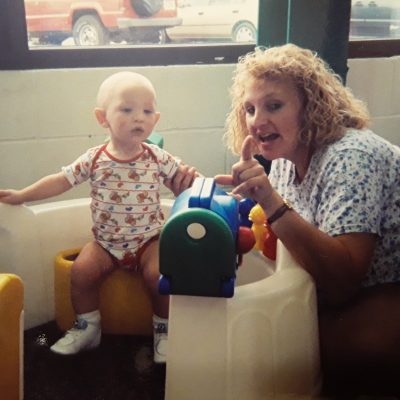
I can only imagine the emotions our parents felt as the test results were being delivered; their adorable blonde-headed, blue-eyed baby boy was diagnosed with FXS. They recommended Babies Can’t Wait Clinic until he reached the appropriate age to start more advanced therapy sessions. Rather than getting to experience what was considered a “normal routine” for children his age, his days would now be filled with different therapy regimens.
Like so many other families that share a similar journey, it didn’t end there. The summer before Dylan turned 4, he stood up on the bed and was staring off into space. My mother watched as his eyes began to roll; he was experiencing his first epileptic seizure. I remember our everyday life being consumed with panic, fear, and hospital visits throughout the years. With each seizure, he would regress; our parents felt as if they were fighting an uphill battle. Although time allowed my family to become more educated and prepared for how to care for my brother, it did not make anything easier or less fearsome.
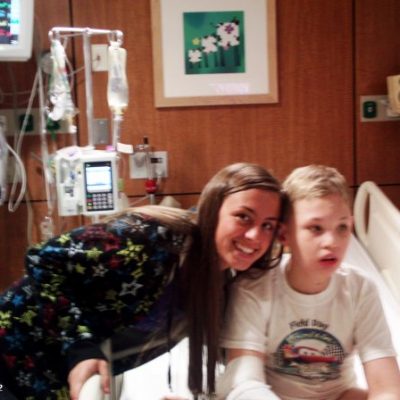
My little brother and our parents became a recognized family at Scottish Rite throughout the years. Not only was Dylan remembered for being absolutely adorable, but his strength was pretty hard to forget. If he does not physically want to do something, it’s going to take a team to get him to do it. Whenever he needed a shot for something, most times you could find half of the office staff at his bedside to assist. As he’s grown older, thankfully he has moments of leniency.
Not only is he strong as an ox, but fast as lightning. I remember driving down the road one day with my granny and Dylan when he reached over and turned the engine off as we were going under a green light without either one of us having an opportunity to stop him; he found this to be quite entertaining as he sat over in his seat cackling.
It was difficult to navigate through predicting his actions and behaviors in every situation, but we learned to notice when he would feel uncomfortable; therefore, we knew to expect his shift in behavior during these times. If he does not want to be somewhere, be prepared to chase after him – he is a bit of a runner. One place he grew a fondness for growing up was therapy (on the days he would feel like participating). He had many therapists over the years that truly helped him and our family navigate through this experience early on.
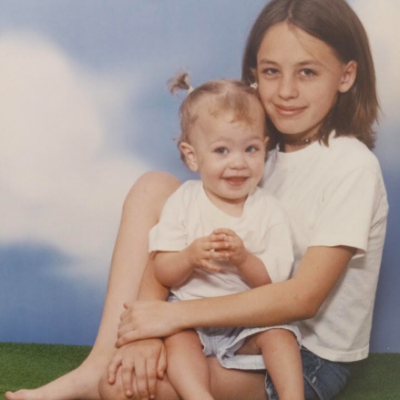
At the time of Dylan’s FXS diagnosis, my sister was just a baby. She too was tested for fragile x; not because she showed obvious signs, but in an attempt to hopefully get a step ahead if she was also affected. Her results revealed she was barely past the marker for what is considered a full mutation; however, the majority of her FXS effects were social/emotional. The scale for fragile X testing is determined by the number of CGG repeats in the FMR1 gene.
Negative: CGG repeat count < 45. A negative result means the person is not a carrier of FXS.
Intermediate: CGG repeat count 45 – 54. This means they are not at an increased risk to have a child with fragile X, and they will not be expected to develop any health complications stemming from fragile X. However, there is potential that their intermediate number of repeats may expand into premutation throughout generations.
Premutation: CGG repeat count between 55 – 199. This group has increased chances of having a child with fragile X, as well as risks of developing conditions like fragile X premature ovarian insufficiency (FXPOI) and/or fragile X-associated tremor/ataxia syndrome (FXTAS).
Full mutation: CGG repeat number 200 and greater. Males with full mutation are expected to have symptoms of FXS, whereas only about half of women with a full mutation will experience an intellectual disability. Full mutation carriers are also not at risk to develop POI or FXTAS.
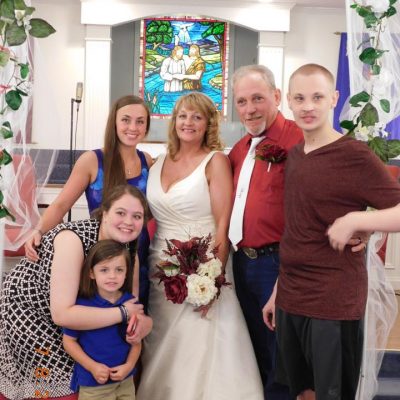
My experience living with fragile X
When the decision was made to test my sister, the doctors asked my mother if I wanted to be tested. They decided to do an in-office evaluation where they questioned my ability to perform in school, how I handled certain situations, and other basic questions to give them a general sense of my cognitive and emotional processes. This led to the decision to put off testing until I was older (basically, once I was more mature/sexually active).
I was between 16 and 17 when I was tested for FXS. My results came back showing my CGG repeat number was around 106; meaning I am considered a premutation carrier of FXS. At the time, I was told that this could mean I had a chance of having a child with FXS in the future but would otherwise experience no effects from FXS; what they failed to mention was that I also had an increased risk of developing POI. Approximately 20-25% of women with a premutation experience FXPOI.
Shortly after turning 17, my nana noticed that I had been experiencing something very similar to her for a few years. I began having hot flashes around age 14 or 15 and did not think much of it at the time. It wasn’t until I was explaining the full experience to my nana of what my body felt like during one of these episodes that she realized it was the exact same thing she was experiencing throughout her menopause transition. She advised me to consult with my doctor and have bloodwork done.
The results revealed that my follicle-stimulating hormone (FSH) level was the same as what was assumed my nana’s would be if they were to test her level. Basically, my ovaries were that of a 40–50-year-old. He then told me that if I were to conceive children, he estimated my window to be closed by the time I was 19; decreased fertility is part of POI. It is my nature to not accept the words “no” or “impossible”, but this news turned my world upside down as I thought about the reality of never having children. My mother is also a premutation carrier and she was able to conceive my little brother and sister in her mid-to-late 20’s, so I tried to keep that in mind.
Nineteen passed me by and I found myself believing that my chances passed by with it; the hope began to dwindle. I began dating my husband when I was a few months from turning 20 and let him know I would more than likely never have children. I figured that if I accepted that as my reality, I could spare myself the heartache of any attempts to try for children in the future and failing.
A couple of years later, I found myself sick for several days in a row. I attributed it to a virus my mom and siblings had just endured. My mother had a feeling that I was pregnant, so I took a test to prove her wrong. However, it was I that was wrong; 2 at-home tests and then a third at the health department there to mock me for it.
How would my premutation affect pregnancy?
At my first ultrasound, there was another surprise; I was pregnant with twins. However, one was not completely formed at the time; my OBGYN said we would find out at my next appointment 4 weeks to follow if it continued to develop or not. At the time, I was not aware that another part of being a premutation carrier included an increased rate of twin births. I then recalled my mothers pregnancy with my sister; she lost my sister’s twin at 5 months pregnant. Four weeks later, my second ultrasound showed only one baby and it was explained that the first one basically absorbed the other baby; this process seemed so foreign to me. Nonetheless, there I was pregnant in spite of what I had been told and made myself believe.
Several months later, we welcomed our precious and perfect baby boy into this world. Months after his birth, I consulted with his pediatrician on whether he should be tested for FXS. She performed a physical evaluation and determined that he did not have an abnormal gait (or any other physical features) and appeared to be hitting all milestones for his age on-time. As he grew older, his pediatrician reassured that there were no signs; however, we could still perform testing in the event he was a carrier, but also expressed the same sentiment as the neurologist did during my initial evaluation that waiting until maturity would also be appropriate.
Over the years, people ask us all the time when we are having our next child. I usually just respond along the lines of being completely content and beyond blessed with an only child and leave it at that. My last bloodwork from a couple of years ago indicated my ovaries were that of a woman 60 years of age; I was 31 at this time.
My response to this common question of having more children is not due to us being opposed to having more children, or due to a risk of having a child with FXS; this has never been the case. There is complete truth in that statement, because we are blessed beyond measure with our only child! It is simply easier to summarize my response in that manner, because sometimes explaining it to people turns from an educational experience to me noticing the guilt in their face for asking the question. Living with fragile X, regardless of the manner, does not define a person. We do not seek sympathy, but rather an opportunity to shine a light on FXS and the many ways those affected and those taking care of the affected experience FXS differently.
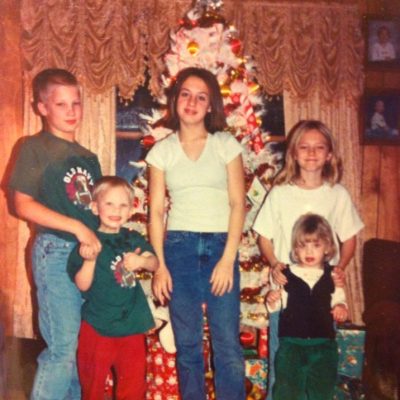
Living with fragile X syndrome changed not only our lives, but our perspective on life
Growing up, when friends would find out about my siblings having FXS, they would ask “fragile what?” My heavy southern accent doesn’t help matters much, and many people would think I said “fragile legs.” I did not take any offense of course; before my brother was diagnosed, I had never heard of it before. When my friends would meet my siblings, they would dote on how cute they were. My little brother was a little bit of a flirt and has always been nothing short of entertaining. My little sister, Cassidy, was always cute with her loose curls and big blue eyes.
I still refer to them as my little brother and sister, but they are both in their early 20’s now. My sister is the beloved aunt Cassie to my son; he loves spending time with her. Then there’s uncle Dylan as his sidekick; he distracts everyone with his antics, in turn allowing my son to practically get by with everything at grandma’s house.
I am happy our son has the chance to spend so much time with them because it gives him a sense of what life is like living with FXS, whether personally being affected or taking care of someone with FXS. Over the years, he has talked about things Dylan does differently, but also explains WHY he does it. His stories remind me of when Dylan was younger and would be playing trucks with our brother, Zac. Zac would start to build a ramp or crash big trucks like they do on Monster Jam, and Dylan would scold him saying, “NO Zac! That’s NOT how you do it!” and go back to playing like nothing happened.
Having special needs siblings was not always easy (especially with Dylan being in the hospital a lot as a child), but it’s a part of my life story that instilled so much appreciation for life over the years. Dylan has an extreme emotional response to most things, but a lot of times this is positive. His ignorance to the evils of this world is what makes me still see him as our “little boy blue”.
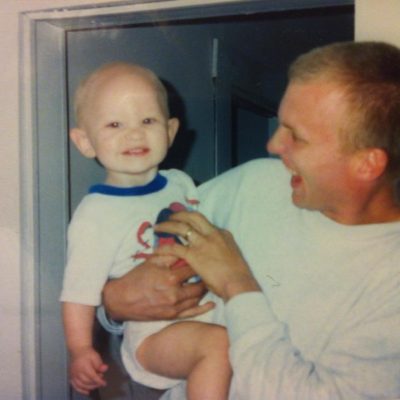
The entire community of families taking care of children and adults with disabilities endure so many hardships throughout their journey. Living with fragile X syndrome (FXS), or any other disability, is such a humbling experience. We take so much for granted in life that sometimes we don’t recognize blessings as they are received. Whether you are personally affected, or taking care of someone that is affected, you deserve to be acknowledged and celebrated. Each and every one of God’s children is special!
If you want to learn more about FXS, check out these resources below:
31 Sharable Fragile X Facts | Fragile X Awareness
The National Fragile X Foundation | Fragile X Syndrome
What Causes Fragile X? • Fragile X Research – FRAXA Research Foundation





